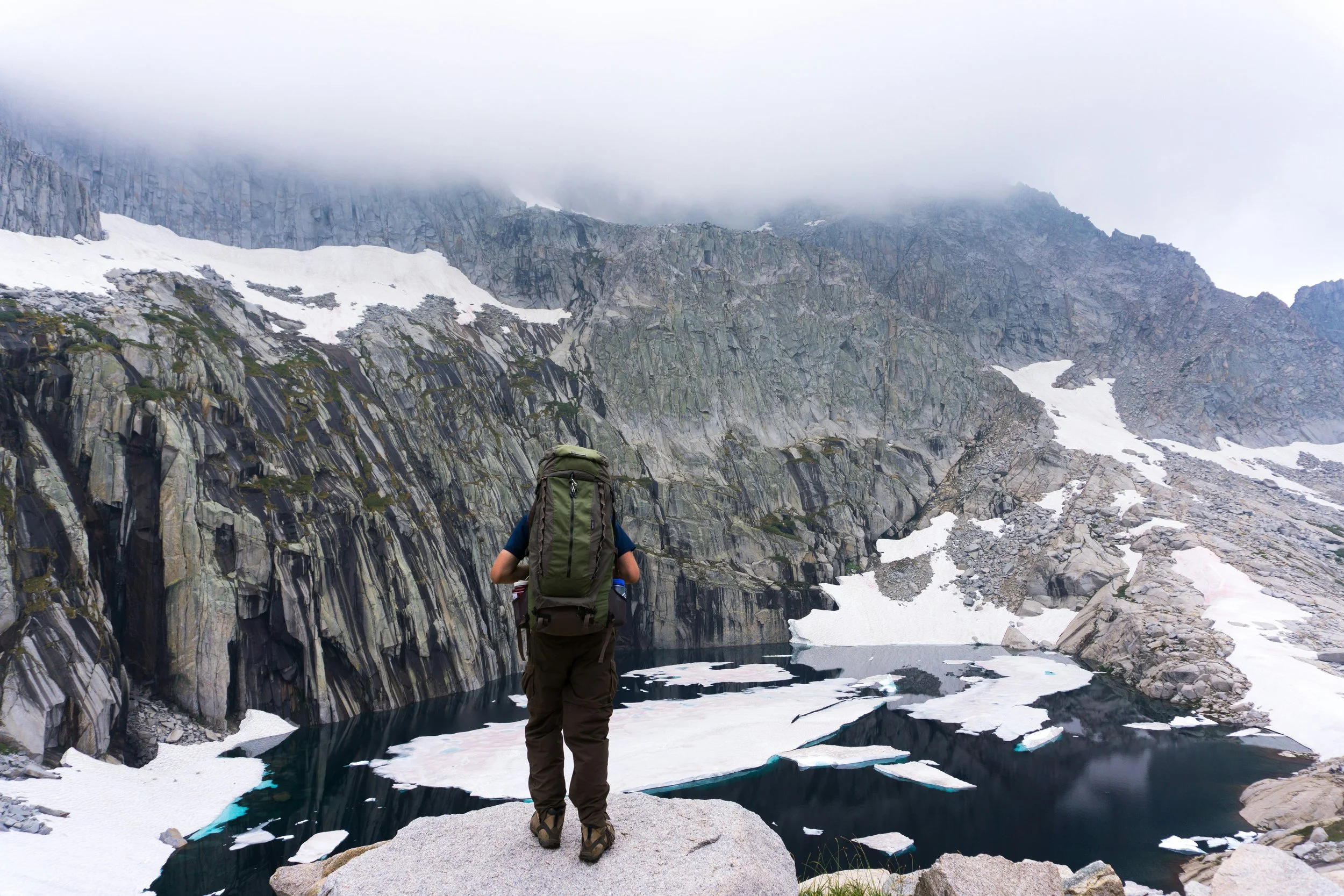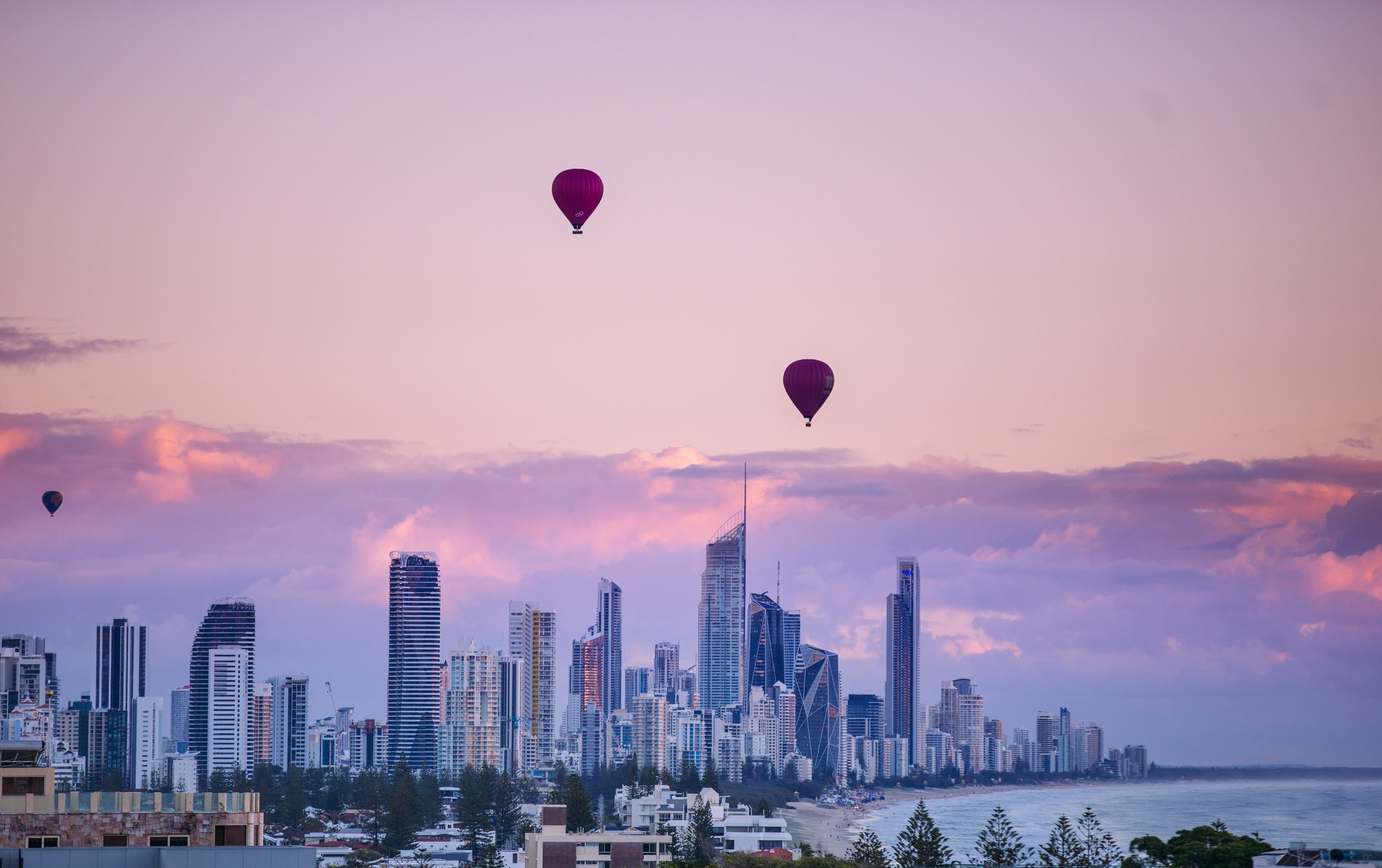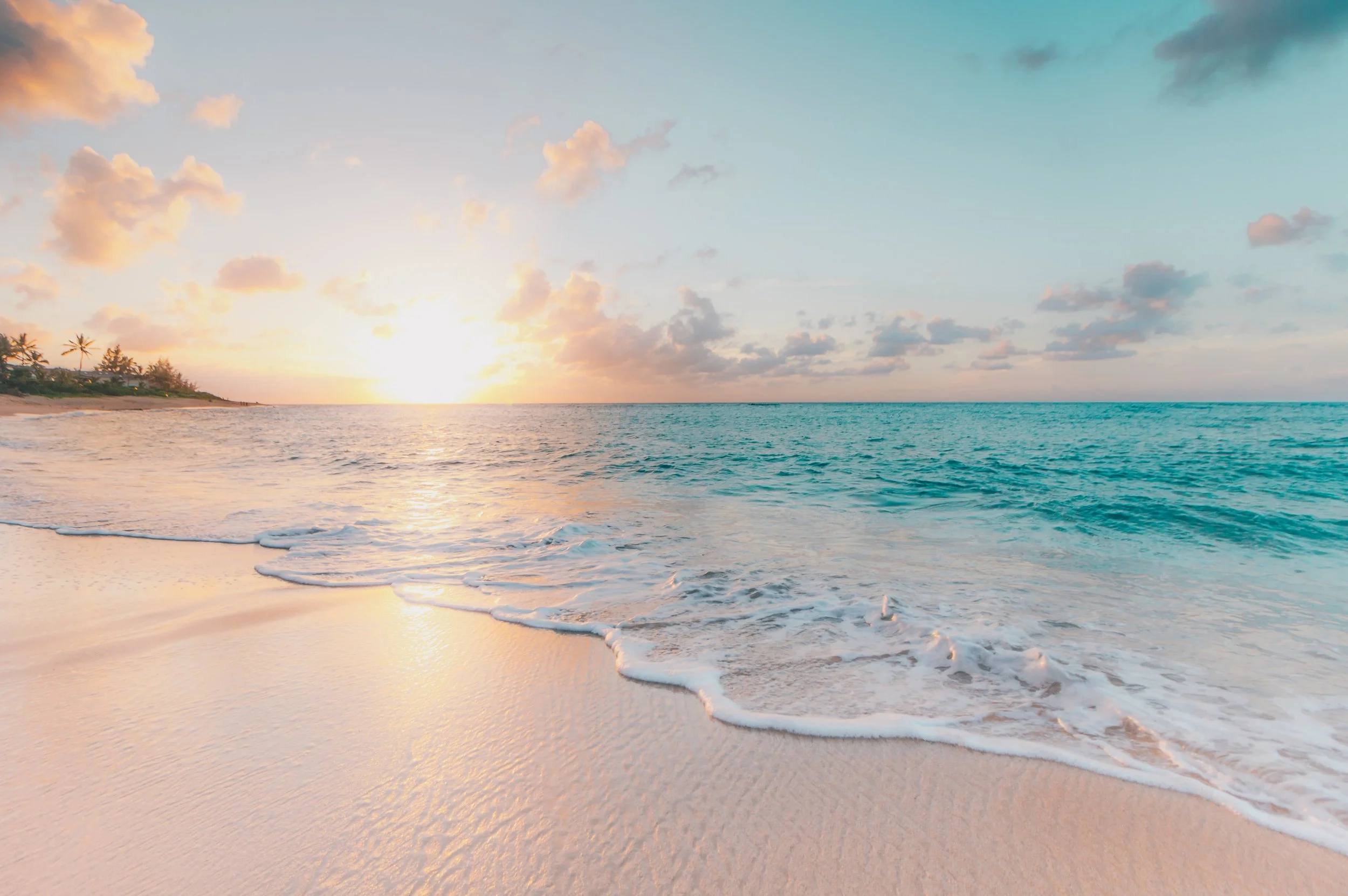Luang Prabang - Phonsavan, by bus and motorbike, 19th-20th of March 2017
Phousa at 525 Bar
As you may have already seen we spent the last few weeks in Luang Prabang doing videos and photographs for 525 Bar, Thongbay Guesthouse, Novelty Café and Manda Lao Elephant Sanctuary.
Our time there came to end and the last night was perfect for celebration of what we achieved in this short time.
525 Bar was organising a fundraiser event for Lao Children Hospital and celebrating St Patrick's Day. We had a chance to listen to amazing musician, Phousa.
We enjoyed the evening but it was starting to get busier and busier and the wait for the drinks was longer and longer. We stayed a bit far away then so we decided we would start walking back.
HandZaround with Vatthana and his friends
As soon as we left 525, maybe 50m walk, we heard loud music coming from one of the local houses by the street.
We saw a bunch of guys having the best time ever with Lao beers in their hands. We couldn't help but smile to them! That's all they needed to invite us in, or rather drag us in haha! A few seconds later we were already holding a bottle of beer each and we were the main focus of the birthday party. Yes - it turned out it was a birthday party of Vatthana's (the guy, who invited us in) 2-year-old daughter! Vatthana was super friendly, and so were his friends - once we finished our beers, within 5 seconds we were given full bottles again...and after about 6 or 7 of them, I was trying to cover my empty bottle so they wouldn't notice my beer is gone, but without a success...I don't know how but somehow it took them max 20 seconds to realise my bottle was empty!
As you may imagine, we don't quite remember what was going on for these couple of hours but we know it was fun, there was music, everyone was singing and dancing and somehow we walked these few kilometres back to where we were staying...what a great ending to our stay in Luang Prabang!
Luang Prabang to Phonsavan & plain of jars by bus
We said good bye to Luang Prabang in the early morning on Sunday, ready to spend the next 8 hours in a big local bus we booked a day before.
We bought the tickets from the local travel agency because the bus station was a bit too far away to buy the tickets there. Mistake. We paid 150k LAK each and the price at the bus station was as low as 95k LAK... oh well at least the travel agent promised we would travel on a big bus - not a minibus.
We despised the minibuses after travelling in one from Thailand's Chaing Mai to Lao border. Our driver was super strict and all we could do was sit straight - there was no space for our legs or bags.
So now we happily boarded the huge local bus, chose our seats and waited for the departure. We put our backpacks under the seats, took out our pillows and put our water bottles in the holders in front of us.
All this, to be announced 5 mins before the departure that we had to get off - there was not enough passengers to go in the big bus and everyone's moving to the minibus...or at least that's what we figured out from what one Lao lady was saying in Lao...
So there we had it - we were second last to board the minibus, which meant we had the second last double seat - thanks goodness - because the last double seat was really 1.5 of a seat. All the passengers' bags were spilling out to it so the two men seating there had to squeeze themselves in for the next 8 hours.
After we mentally gave up and changed our mindset from 'the luxury of having a bit of space for legs' in the big bus to 'no space for legs at all' in our beloved minibus, we were ready to go.
The Road from Luang Prabang to Phonsavan
The minibus ride quickly made it to the 2nd place in my ranking of the worst bus rides since we started travelling (the 1st place belongs to the Sri Lankan bus ride summarised as 100km/h through towns on the 45 degree angle with 100 passengers over the limit).
The road was super windy and everything would be okay, if the driver decided to drive no more than 50km/h. But speeding almost 100km/h through the S-like turns with the big cliffs on one side and enough space only for one car on the road, you can imagine that we were simply terrified to death.
Not sure how but somehow we survived that bus ride. Me with my head in the pillow, so I didn't have to look at the minibus balancing on the edge of the cliffs, and Jack Johnson on a loop for 8 hours (because that's the only relaxing music I found and also I didn't want to listen to a Lao lady in the seat nearby puking her insides out ) and Zach with his headphones in and eyes shut as hard as it was possible.
Anyways, we reached our destination - Phonsavan and the Plain of Jars.We decided to have an early night so that we could get up early the next morning, hire a motorbike and ride up to the Plain of Jars sites open for visitors.
The Plain of Jars - site 1
Before visiting Laos, we'd never heard of the Plain of Jars. Not sure how that's possible because it's considered to be 'the most important archeological site in South East Asia'!
The sandstone jars date back to 500 B.C.E. and in 1930s archeologist Madeleine Colani settled down that they may have been used for burial of the bodies. They may have also been used for storing things and Lao people laugh that their ancestors held Lao-Lao in them (a cheap, strong, locally-made wine).
What's amazing about the jars is their quantity and size - there are about 90 sites in the Plain of Jars where the jars are found and the biggest sites contain up to 400 of them! At the moment only 7 sites, out of the 90 existing ones, are open to visitors.
We really wanted to visit the Site 52 as it's the only one where the jars have the covers and where there are so many of them. But we didn't have enough time - visiting this site involves a 5 hour trekking so we would have to stay in a village on the way overnight. Instead we rode up to the Site 1 and Site 3.
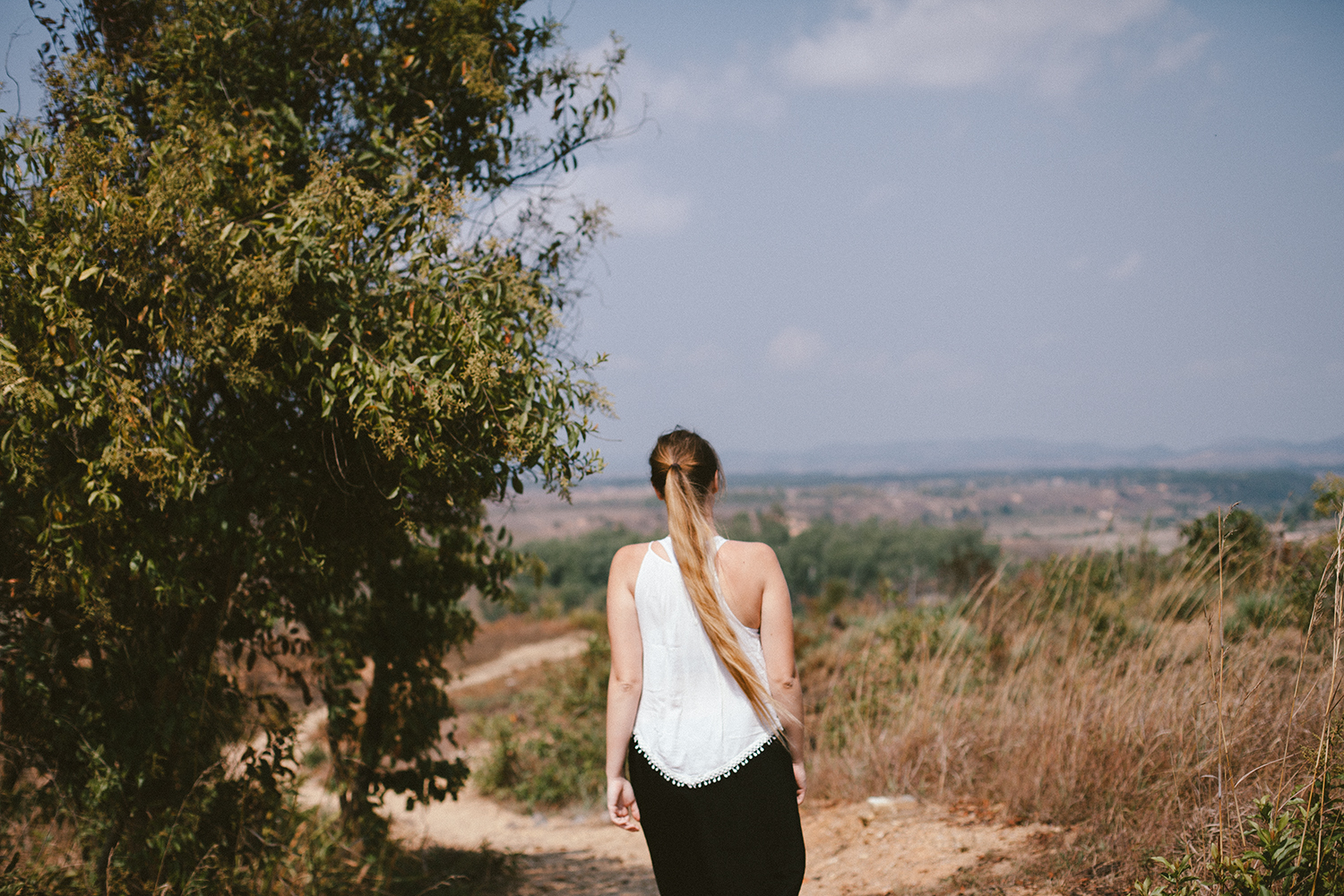
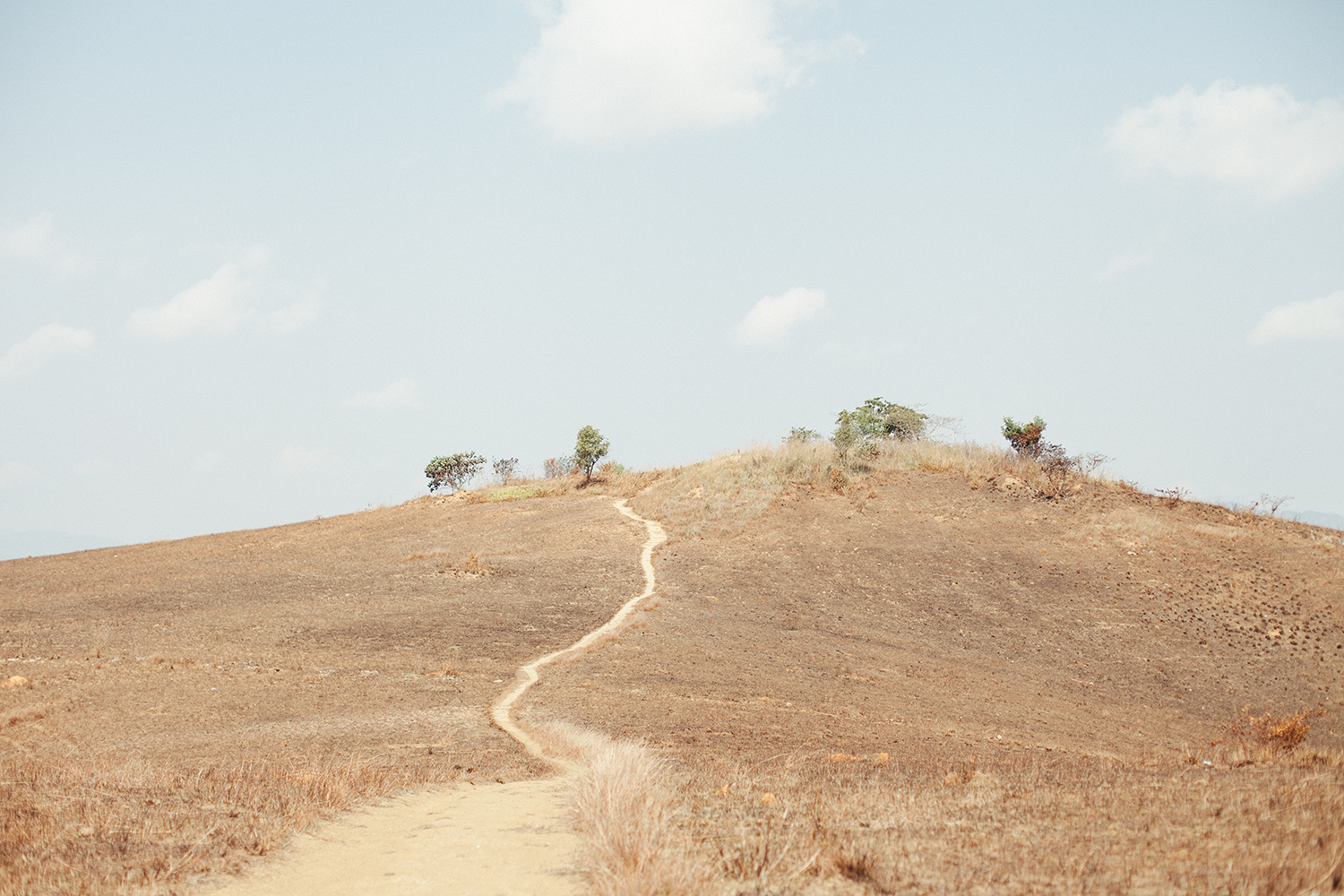

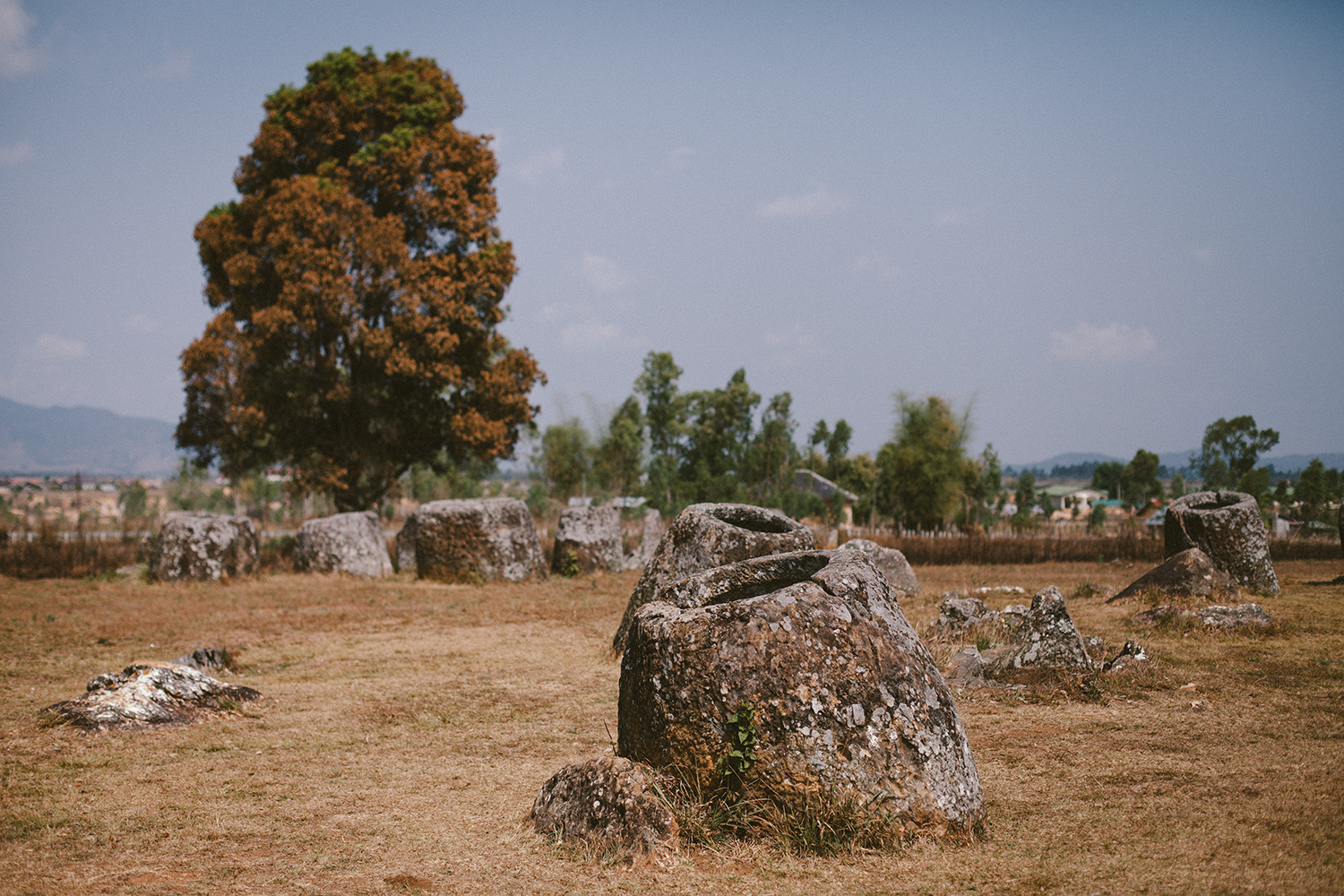
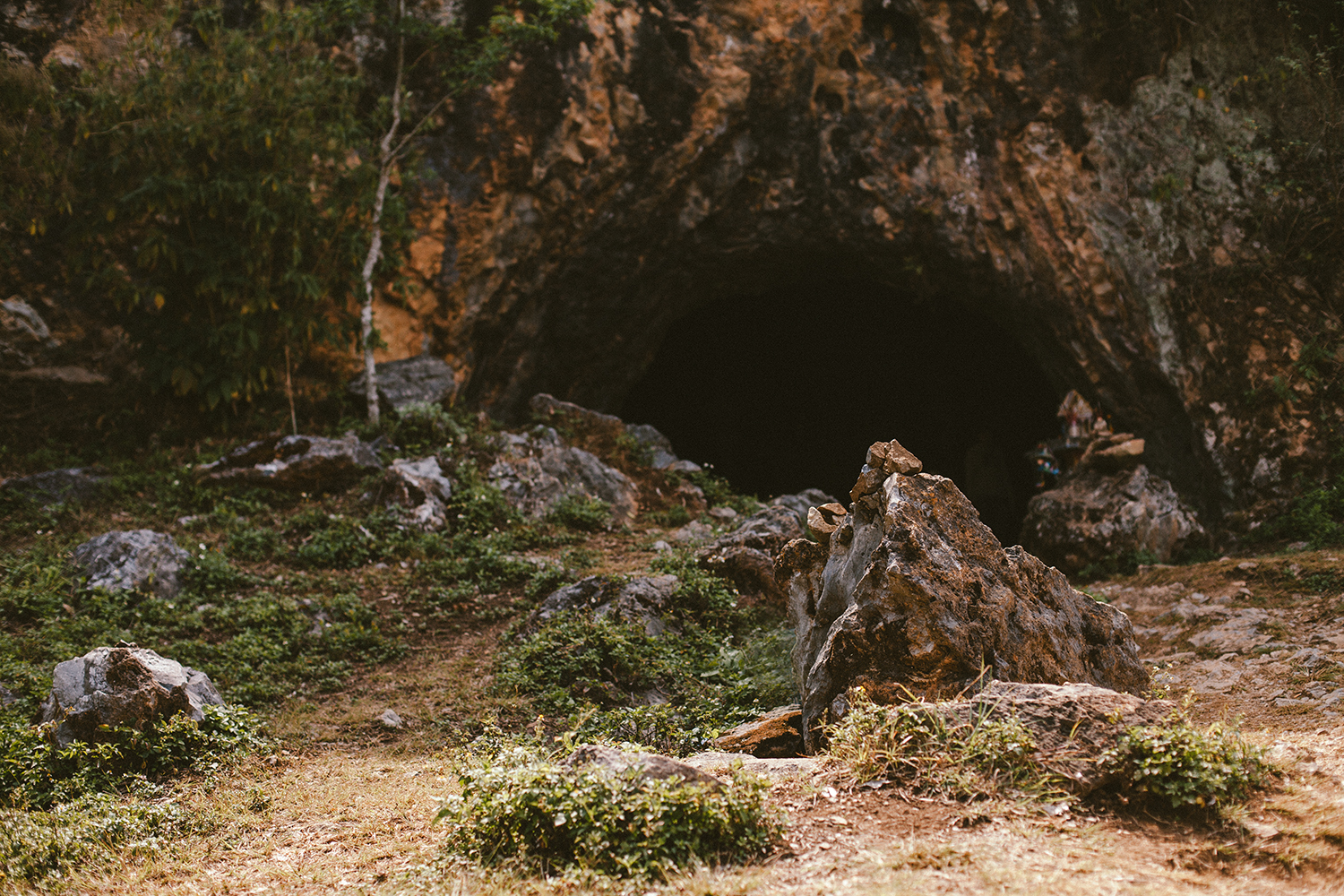
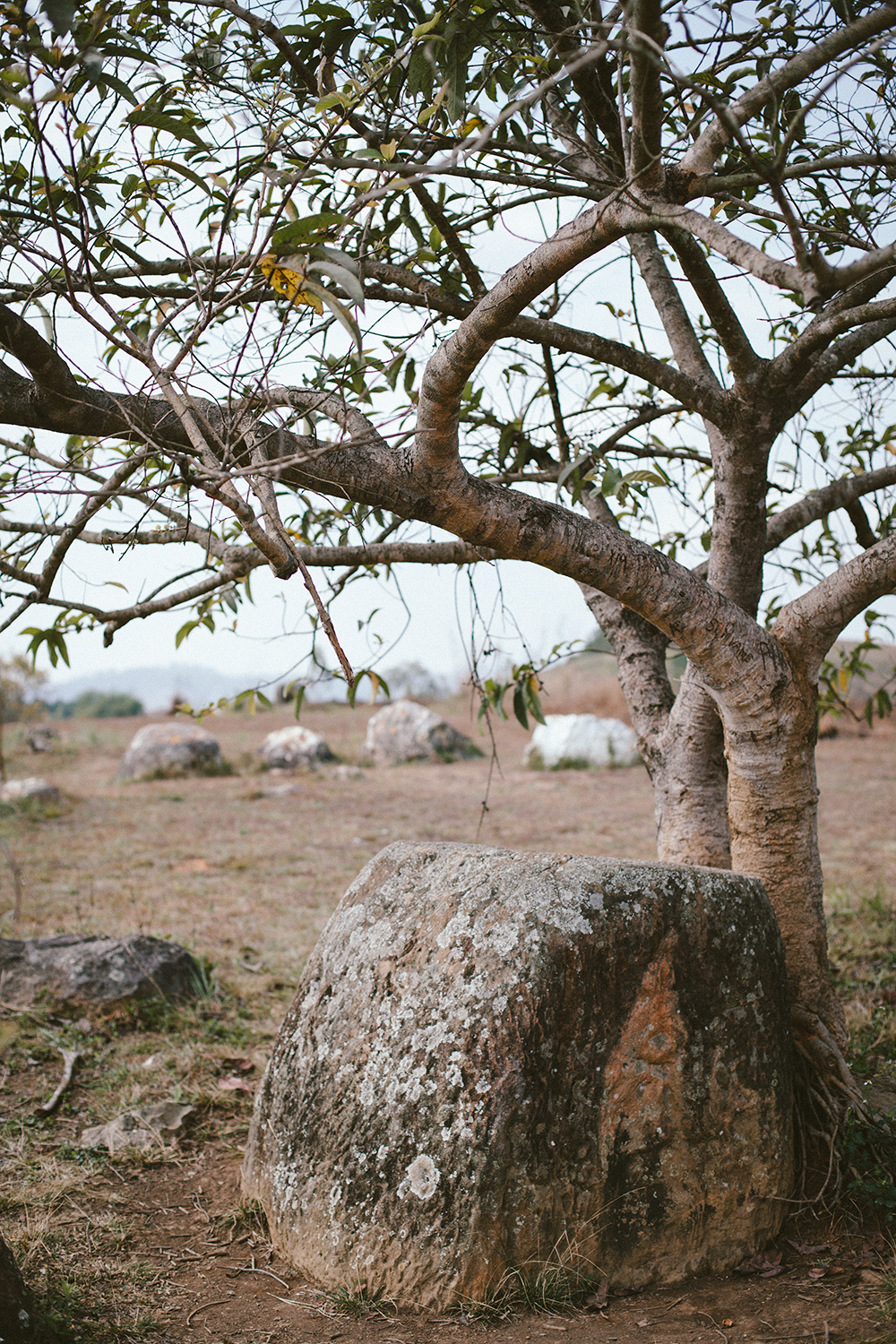
We got to Site 1 at the same time as a Chinese tourist bus but luckily the area was big enough to enjoy it even with a loud bunch of people.
It was really impressive to see a field full of huge stone vases thousands of years old. We also enjoyed a little trek through the hill that let us see everything from the distance.
We decides to skip the Site 2 because we learnt that tourist buses usually visit sites 1, 2 and then 3. This way we would get to site 3 before a bunch of other people. Google Maps showed us the route and we hit the road - it was supposed to be a 40min ride.
We had no idea how this dirt road made it to Google Maps but our bike must have hated us for hitting its bottom over and over again on big holes and stones. It also was hardly making it up the steep dusty hills. The views were amazing though - rolling hills full of cows, water buffalos and wooden huts on the way.
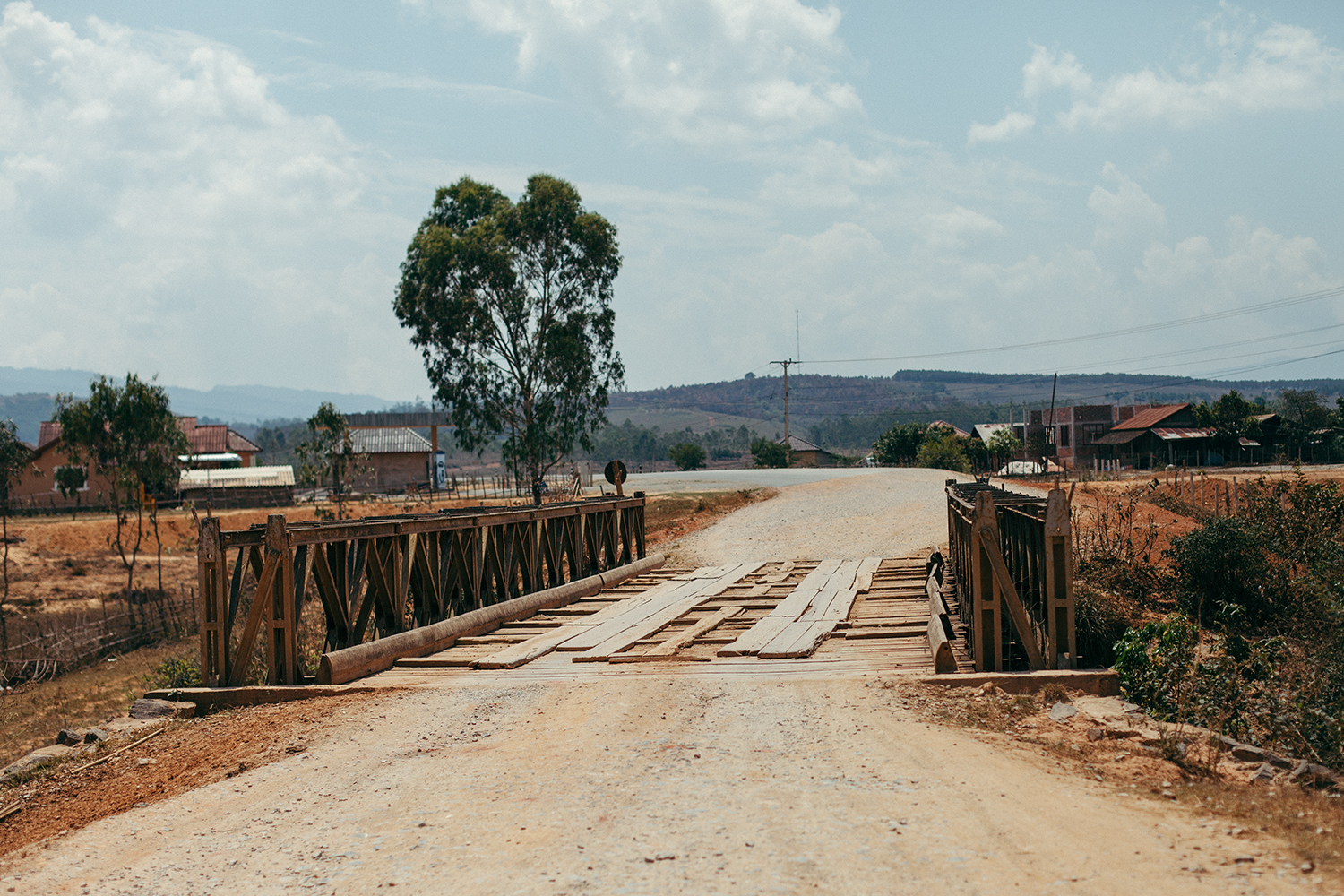
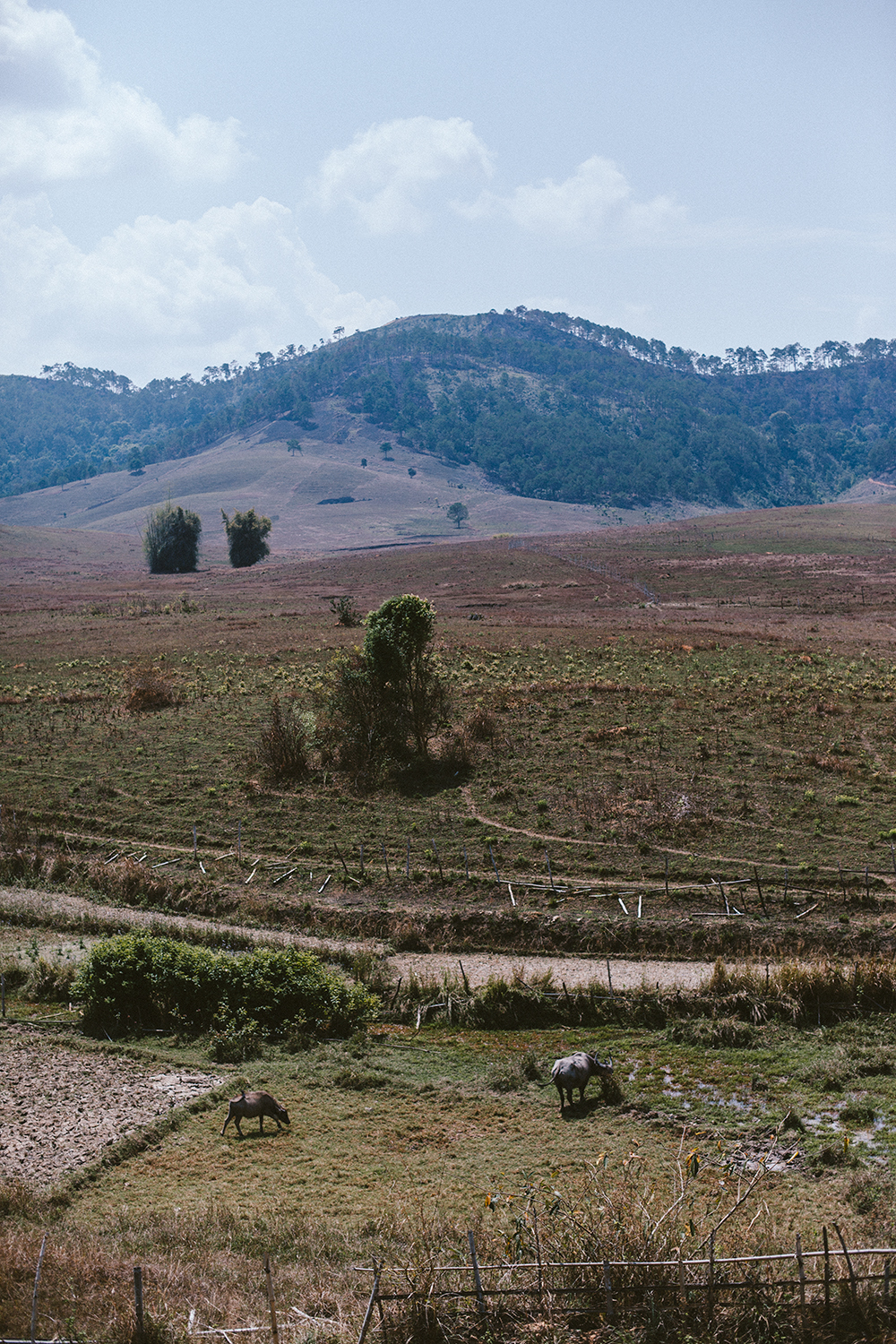

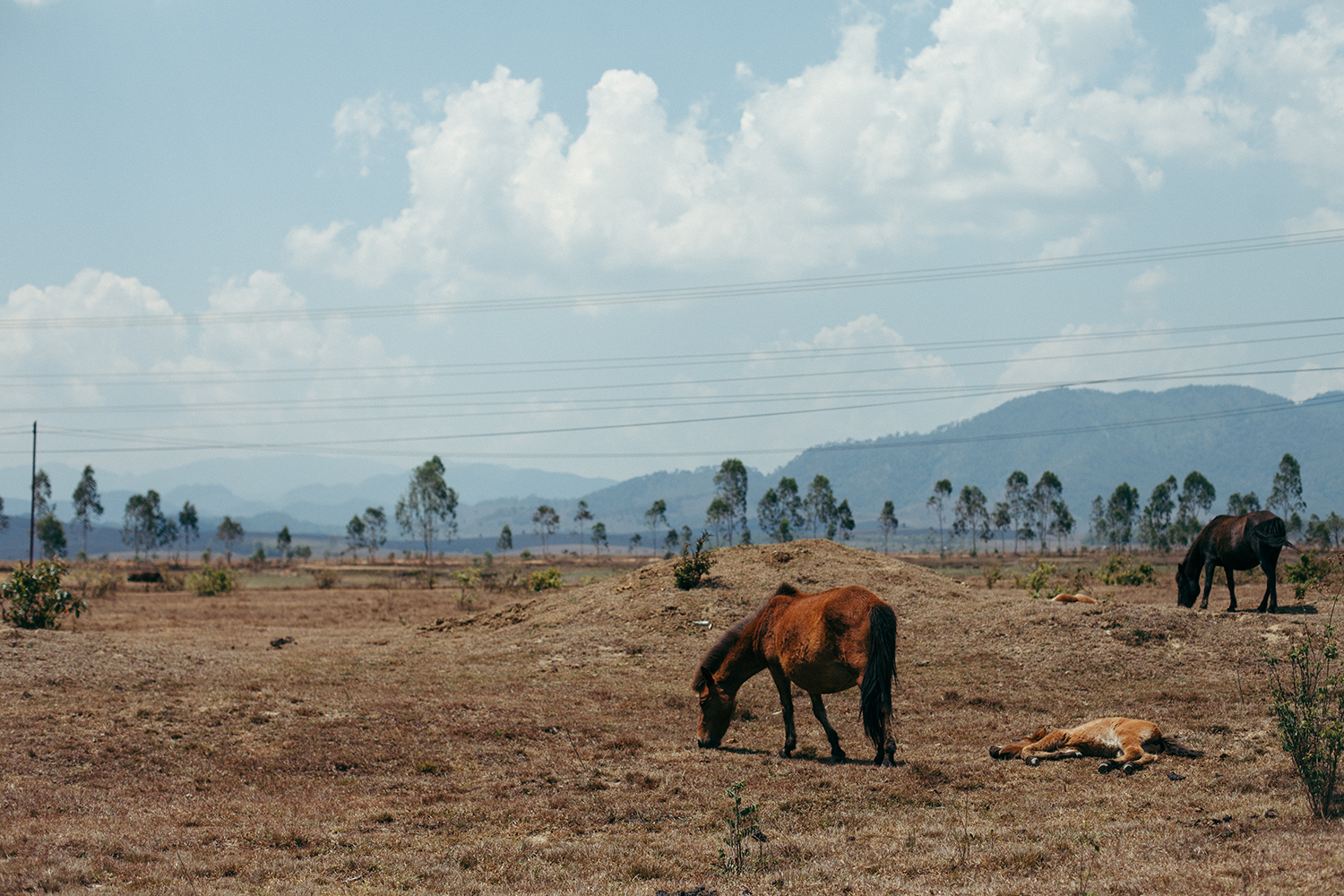
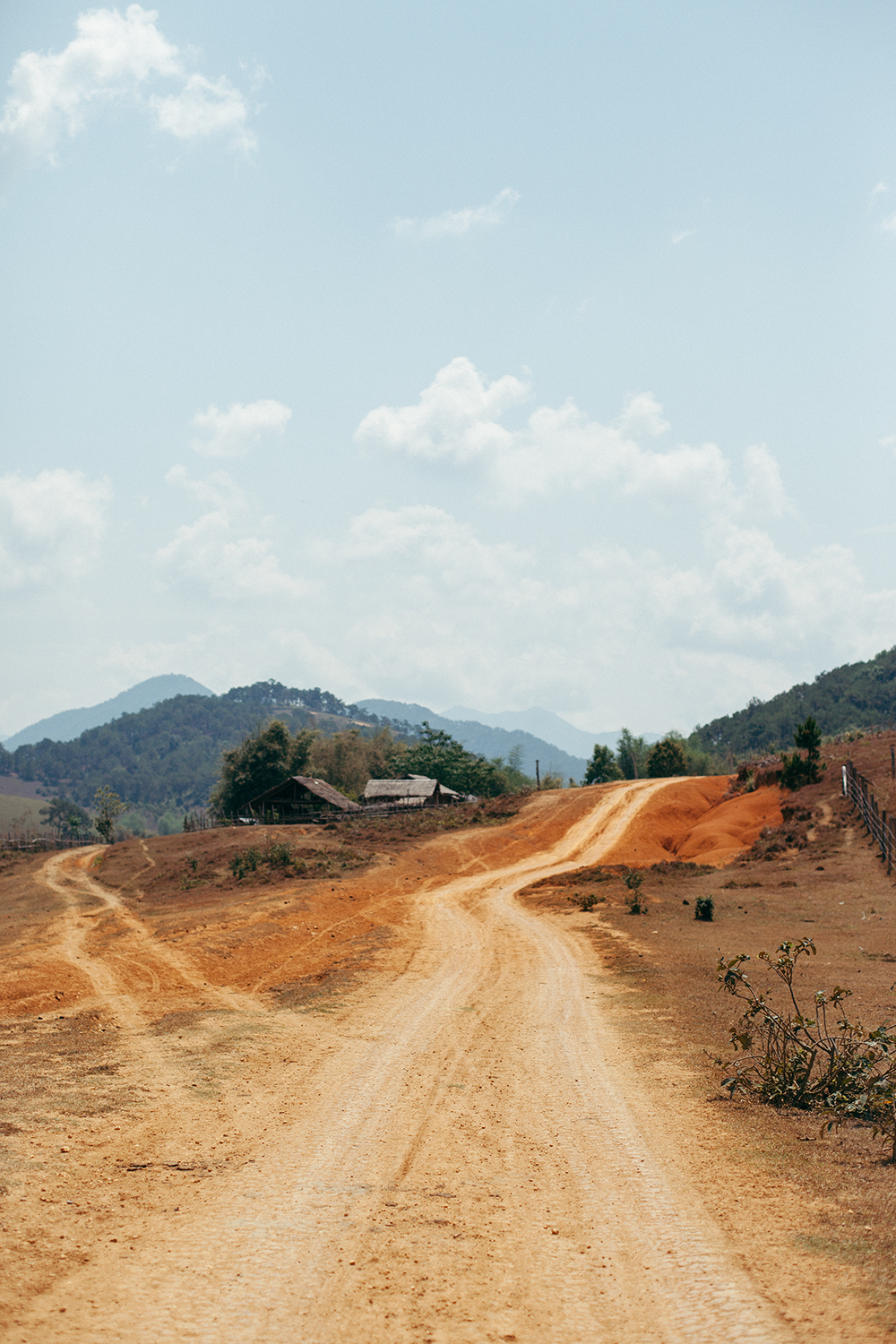
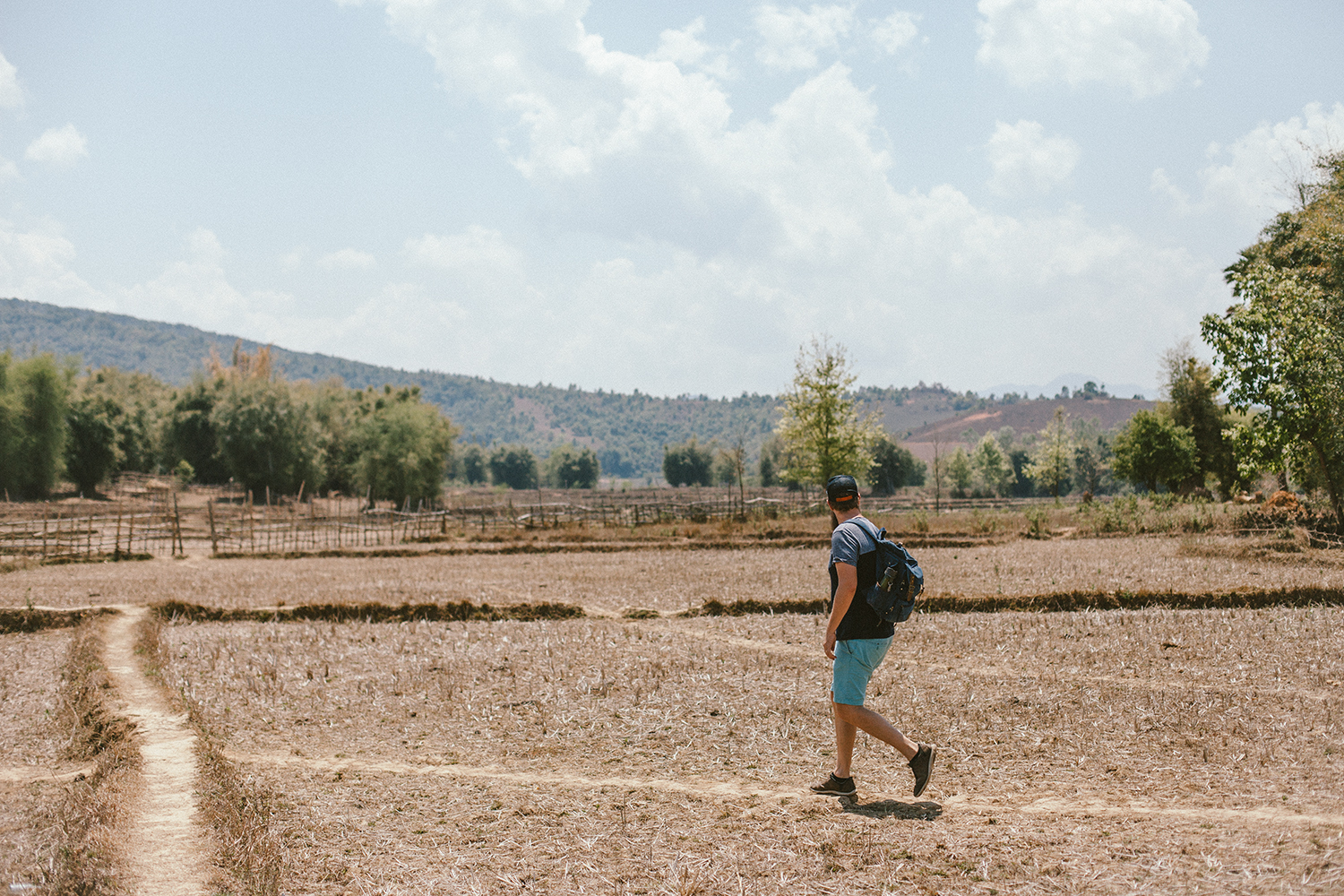
The Plain of Jars - site 3
Eventually, after our brains were shook up to the extreme, we got to Site 3. It was beautiful - we walked through the fields and little wooden bridges built over muddy fish ponds. There were just two other people in a distance so there was plenty of space to enjoy the views on our own. This site reminded us more of a cemetery. The jars crowded in the shadow of the trees and the space had a wooden fence around it - it really reminded me of the cemetery from the Polish village I grew up in, although this one was smaller and 'the graves' (if that's even what ancient Lao people used them for) were thousands of years old.
In the end we were exhausted by the sun and our necks were getting red but we saw a sign towards a waterfall. We couldn't miss a waterfall! We drove up another dirt-path, which eventually turned into an enormous empty building site. It looked like a new big road was being built on the cliffs of the hills that go down towards the river. We drove and drove and the landscape was pretty surreal - the landscaped path for the river looked like a moat around the hill and S-like roads were following the river, which we could see at the foot of the cliffs.
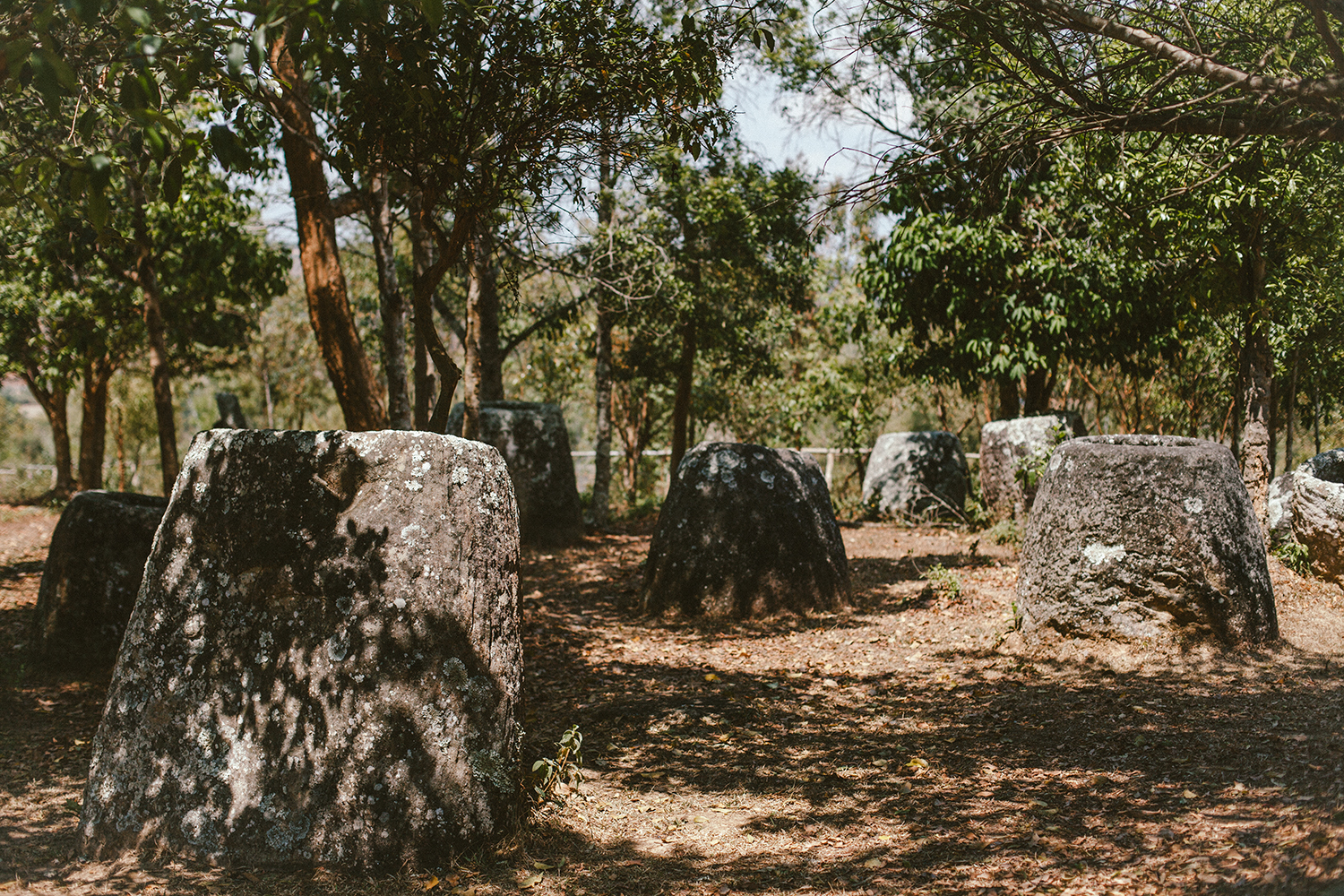
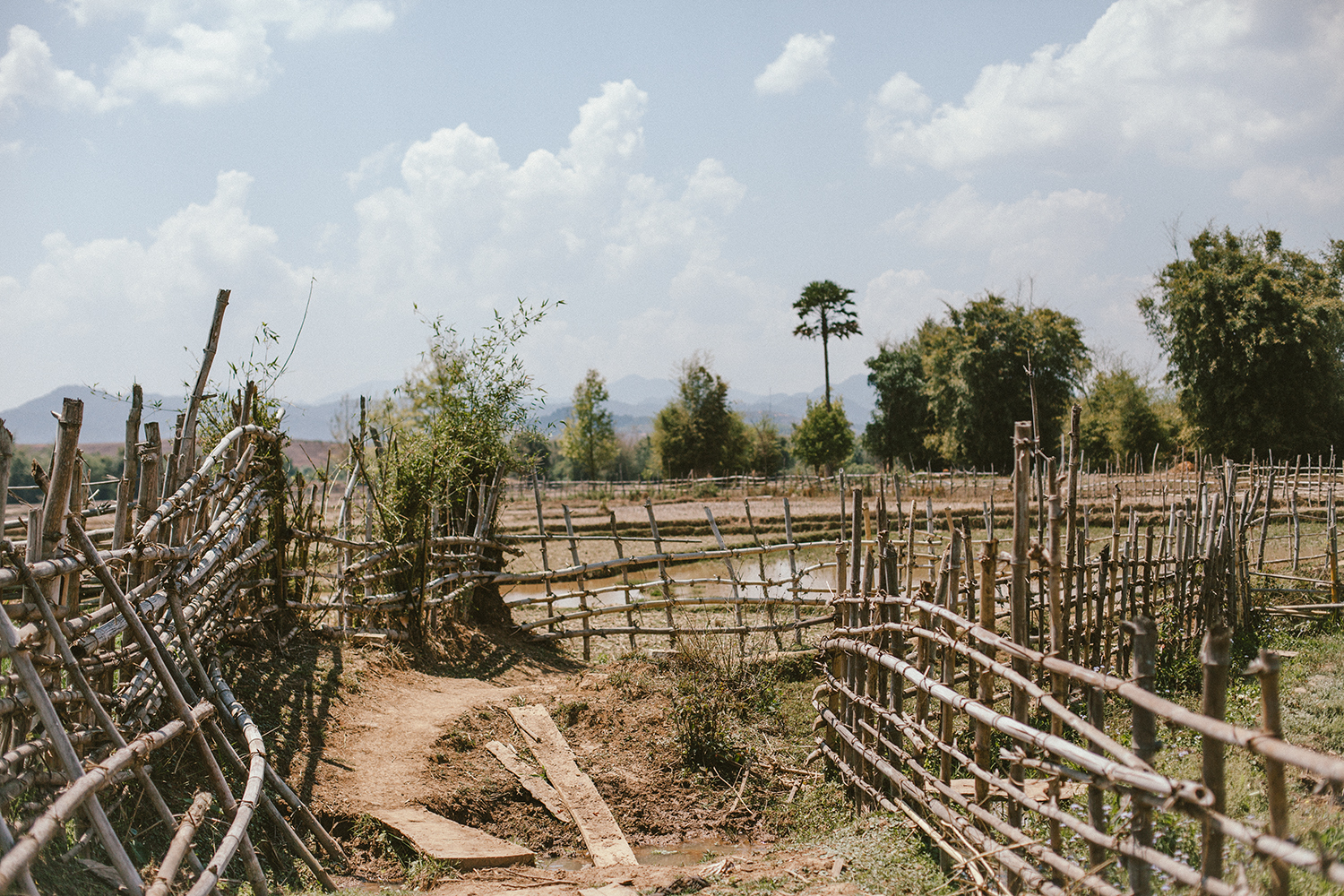

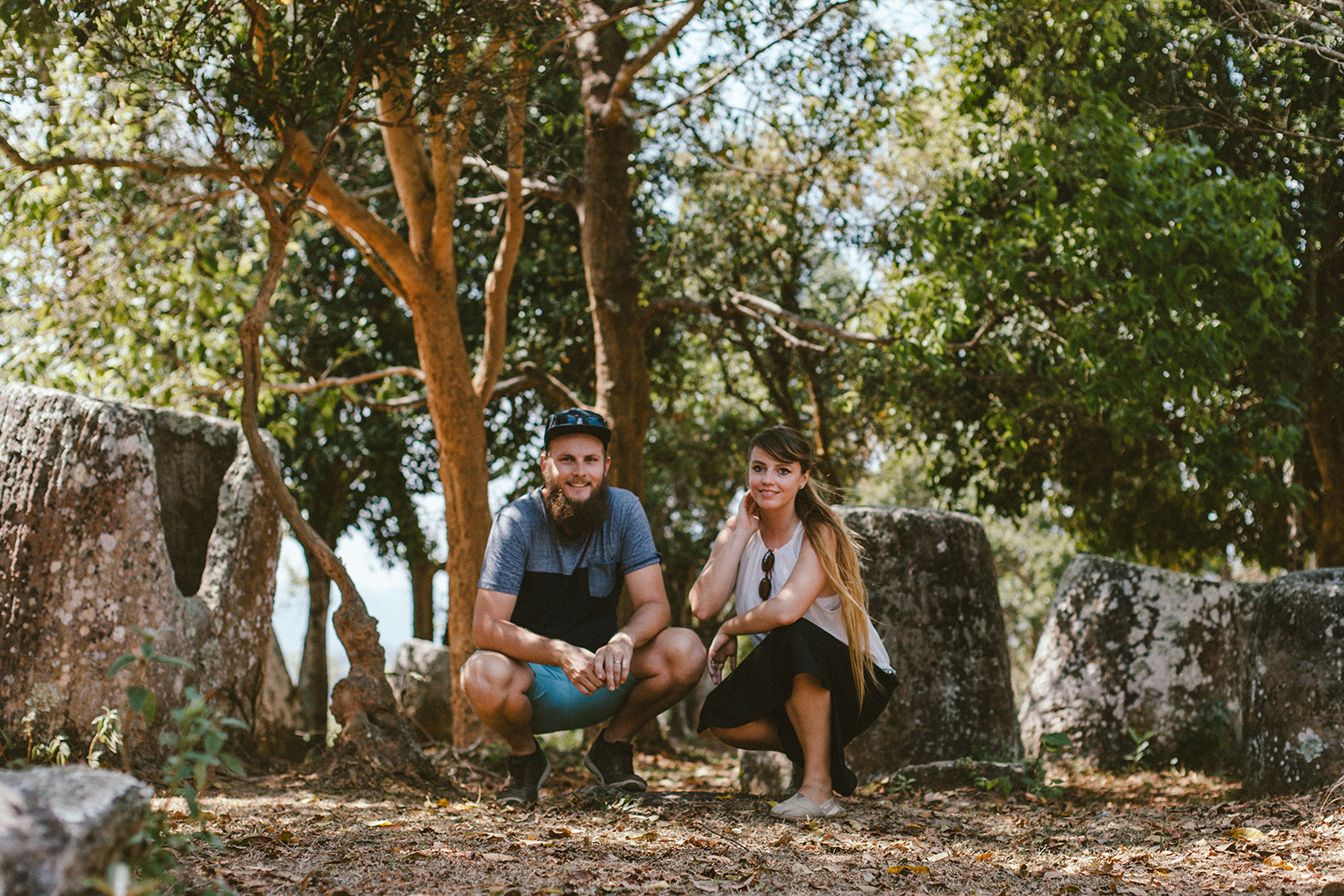

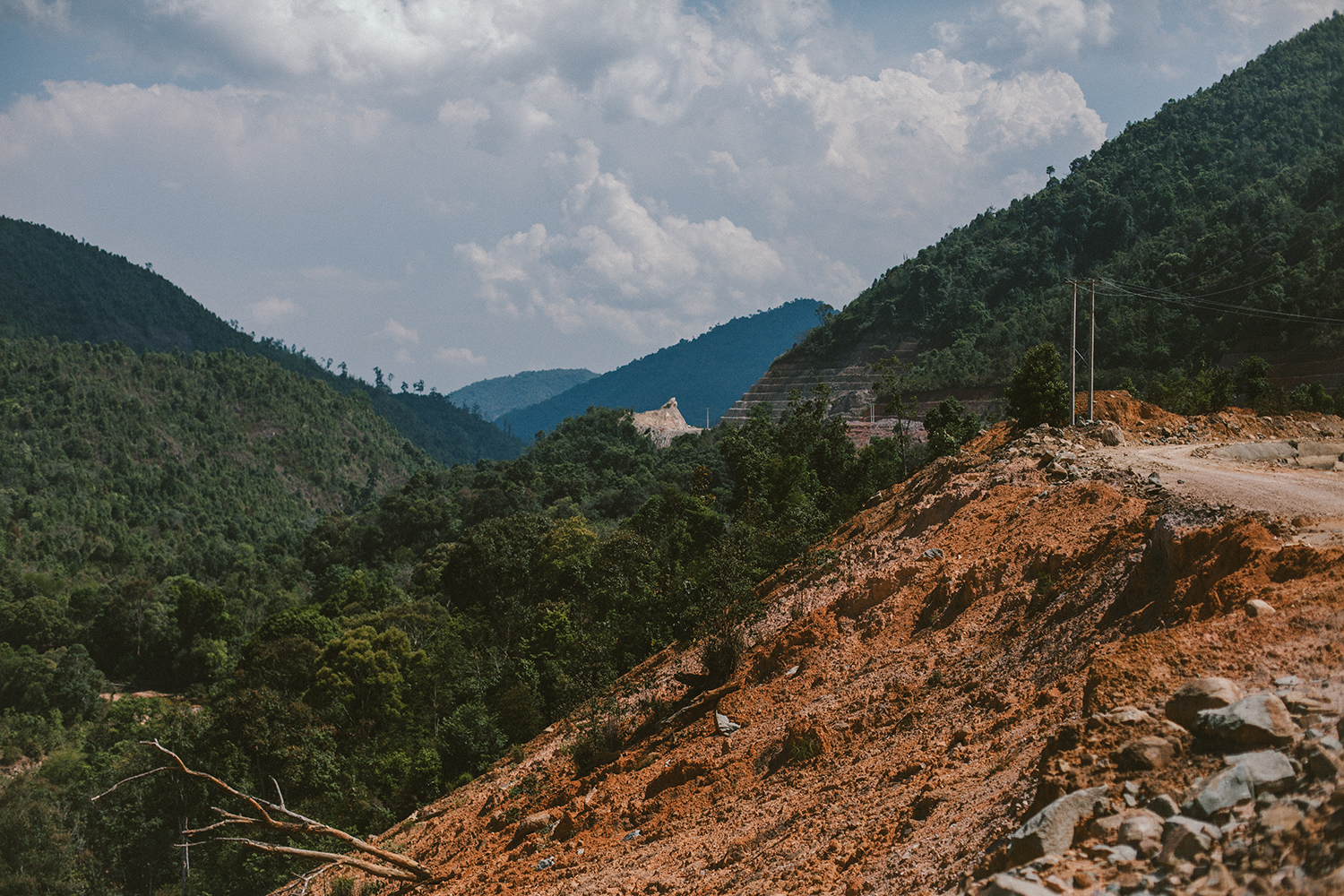
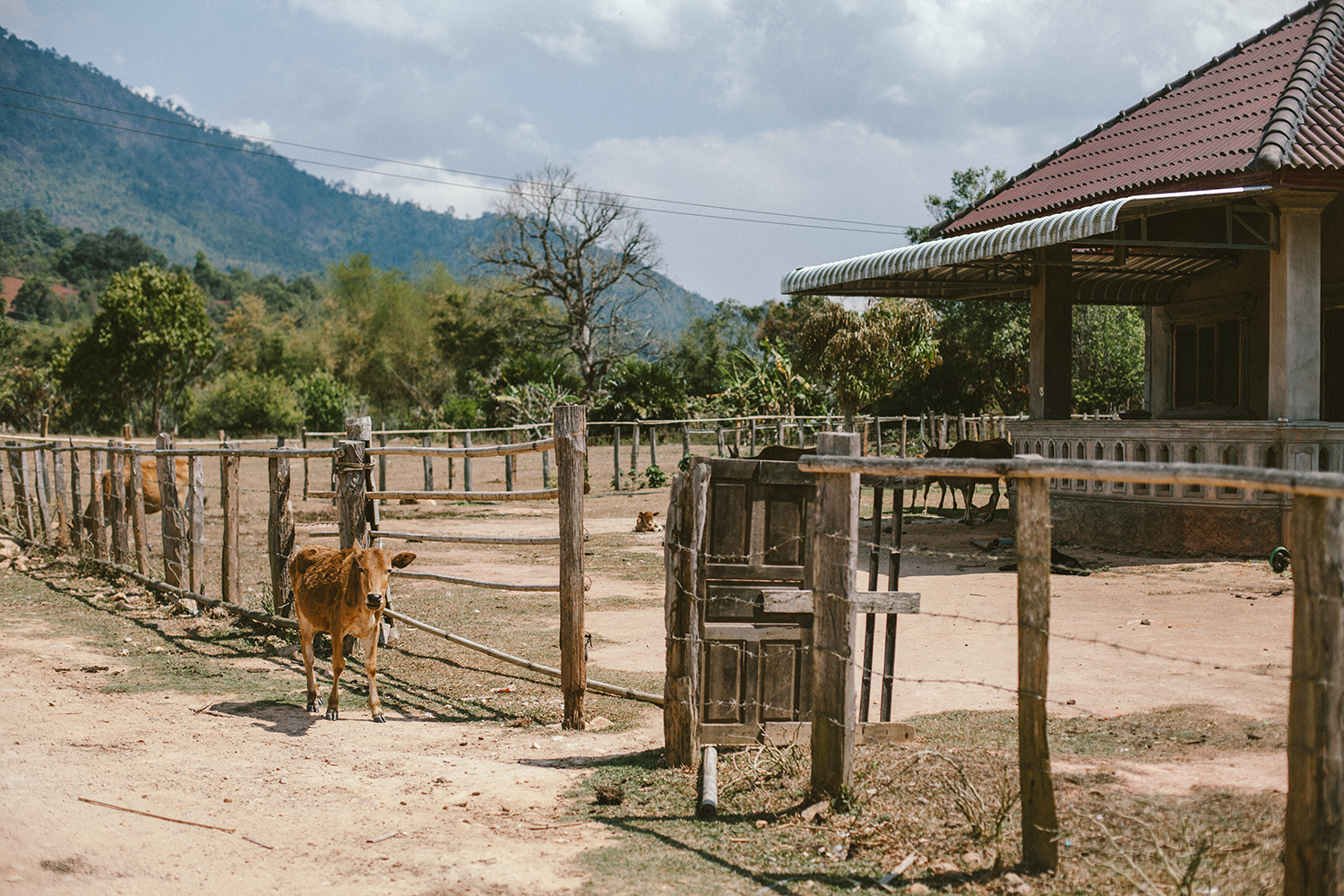
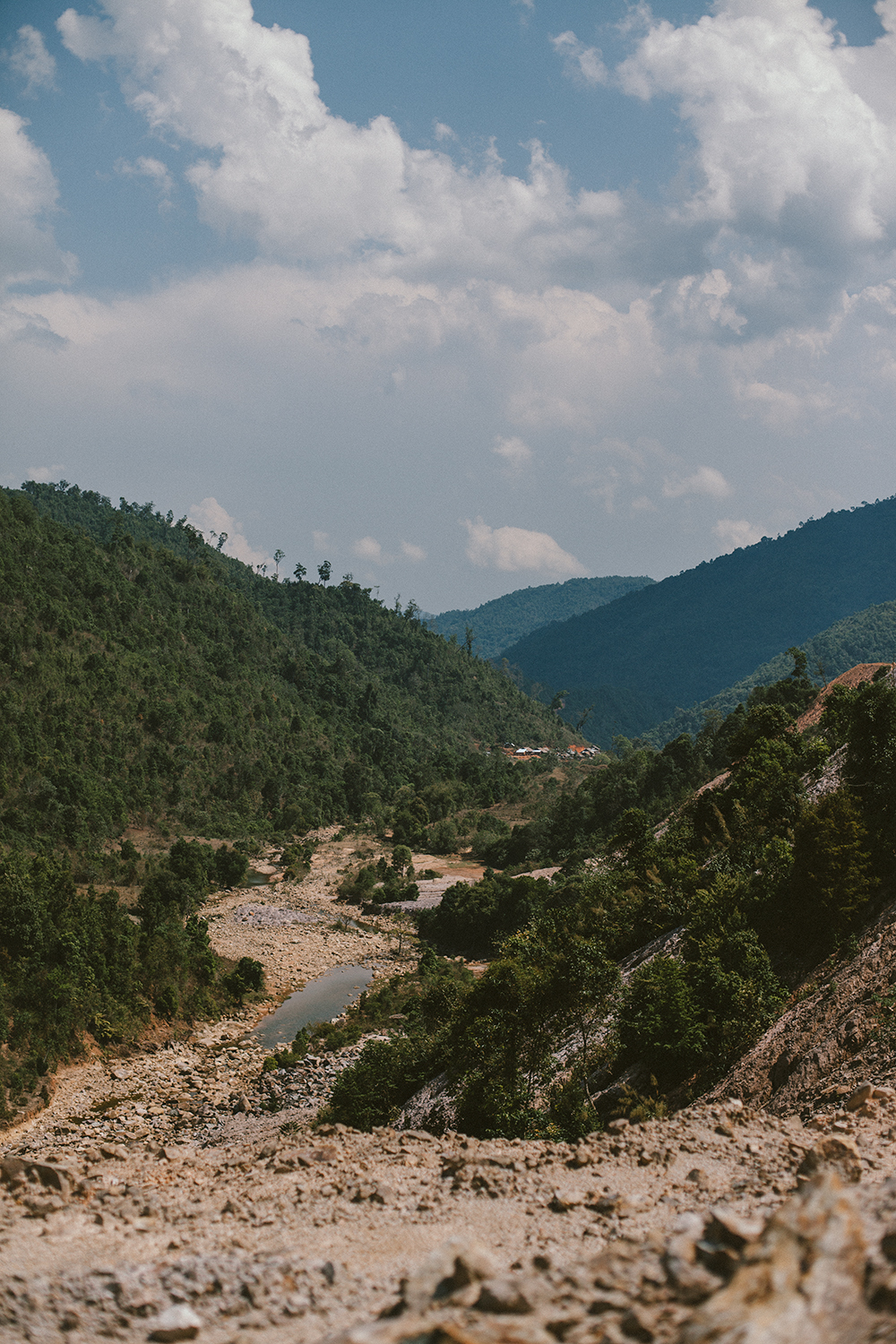
There was no sign of the waterfall but we passed the river and huge boulders, which suddenly ended at the edge of the cliff - that must have been the waterfall in the wet season but during the dry season, which we were in now, there must have been not enough water to 'fuel' the waterfall.
The way back was smooth. Going back and forth a couple of times and eventually we found an asphalt road. But there was one more thing to do today before leaving Phonsavan the following morning.
why is laos the most bombed country?
Do you know what UXO is?
In the afternoon we visited the UXO Information Centre, also known as MAG (Mines Advisory Group). UXO is an Unexploded Ordnance. A few paragraphs above we wrote that only 7 out of the 90 sites in the Plain of Jars are open for visitors. This is because this whole area of Laos is covered in unexploded cluster bombs, which until this day keep killing and injuring local people, who stumble on them.
Do you know that Laos is the most bombarded country in the world?!
We couldn't believe it! As all 'the war things' are complicated, this one is no different, but whilst visiting the UXO Information Centre, we sat down and read a bit on the topic. In short - during the Vietnam War, soldiers were trying to get between North and South Vietnam but since they couldn't go through Central Vietnam immersed in war, they were making their way through Laos. US decided to 'outsmart' them and bombarded their trail - an area known as Plain of Jars; although the southern parts of the country are also covered in bombs.
MAG signs we've seen on our way
The whole thing was called 'the Secret War' and was going on in 1950s-1970s.
The aircrafts dropped two million tons of huge bombshells. Once the latter left the planes, they would open up and release about 640 little 'bombies'. These needed to spin 2000 times in the air to explode. Majority of them did and fired in the air, but about 200 to 300 of them would reach the ground without managing to spin 2000 times. They landed on farmlands, fields, forests and villages and have been waiting there until this day for someone to stumble on them - they would then explode.
plain of jars - bombing
We learnt all of this from the UXO/MAG institute located on the main street in Phonsavan. The UXO Information Centre organisation was created by Thoummy Silamphan and it aims to help the victims of UXO-connected accidents, inform people about the UXO facts and work close with UXO Teams, which prevent the future accidents. How do they do it? Unfortunately their work is hard and strenuous - they remove all the cluster bombs one at a time by searching the vast areas of the country. Thanks to them visitors today can enjoy the open sites of Plain of Jars - these areas were heavily bombarded and whilst visiting them we saw many enormous bomb craters.
The cleared paths are marked with stone markers bearing MAG sign on them. When we scooted up through the dirt-paths we saw a couple of MAG Teams at work - searching through the farmlands around us. It was really weird to realise that, if we went let's say 10m off the beaten track, we could stumble on a cluster bomb...
The MAG signs marking the paths safe to walk on
This unfortunately is the reality for many villagers out here. In the wonderful documentary ('Surviving the Peace', 2011), which we had a chance to see at the UXO Information Centre, one thing really striked us. Clearing Laos off the bombs, which were dropped by US aircrafts merely 40-50 years ago, changes the life of its people, who are happy to be able to use their country's soil without fear again, but at the current pace, the quantity of the bombs there is, will take thousands of years to clear out...
Luckily year by year US raises their financial help for Laos to fund UXO connected activities but it's a drop in the sea of needs.
So if you ever visit Phonsavan, make sure to visit UXO Information Centre. You can buy there handicrafts made by the victims' families, which financially helps the organisation and its dependants. You can also donate to MAG.
And if you're more interested in the topic, check out the documentary 'Surviving the Peace' or the book 'Laos: Legacy of a Secret' by Sean Sutton.




